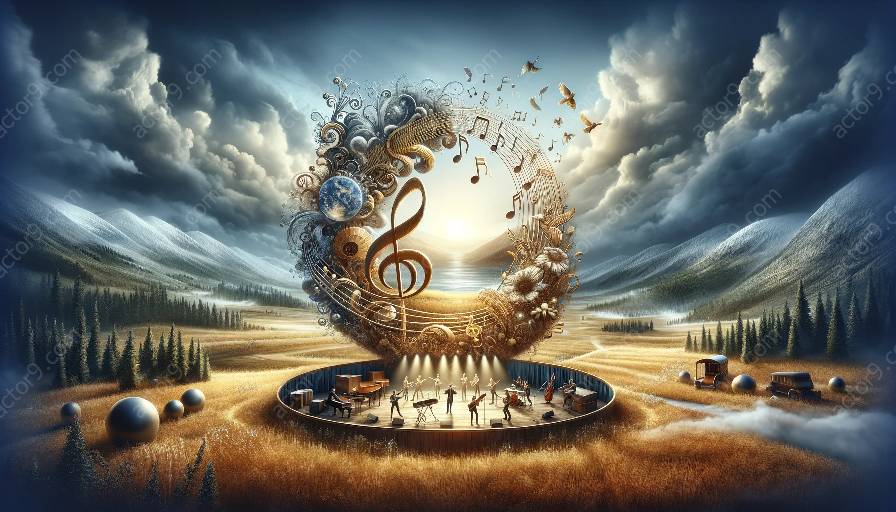When it comes to circus performances, music plays a pivotal role in creating ambiance, amplifying emotions, and enhancing the overall experience. The technical aspects of composing and arranging music for circus performances are essential in capturing the essence of the show and elevating the audience's engagement. In this topic cluster, we'll delve into the intricate details of how music intertwines with the circus arts, exploring its technical components and its profound impact.
Role of Music in Circus Performances
Before diving into the technical aspects of composing and arranging music for circus performances, it's crucial to understand the role of music in circus arts. Music serves as the heartbeat of a circus performance, setting the rhythm and atmosphere for each act. It acts as a guide for performers, dictating the pace and emotion of their routines while captivating the audience's attention.
Moreover, music in circus performances holds the power to intensify suspense, evoke awe, and accompany the mesmerizing feats of acrobats, clowns, and animals. A well-composed score can transport the audience into the enchanting world of the circus, creating an immersive and unforgettable experience.
Technical Aspects of Composing and Arranging Music
Composing and arranging music for circus performances requires a deep understanding of the show's storyline, acts, and characters. The composer must seamlessly weave melodies, harmonies, and rhythms that complement the choreography and synchronize with the performers' movements. Additionally, considering the diverse nature of circus acts, the music composition must be versatile and adaptable to cater to various themes and moods.
Furthermore, the arrangement of the music involves orchestrating different instruments and soundscapes to evoke specific emotions and enhance the visual elements of the performance. It requires meticulous attention to detail, precision in timing, and an acute sense of synchronization with the live performers.
Integration of Music with Circus Arts
Blending music with circus arts is an intricate process that demands seamless integration. The composition and arrangement must align with the dynamic nature of the circus acts, seamlessly transitioning between high-energy acrobatics, comedic interludes, and graceful aerial displays. This integration enhances the narrative of the performance, guiding the audience through ups and downs while creating an emotional connection.
Moreover, music serves as a supporting element for the performers, providing cues and signaling pivotal moments within their acts. It acts as a catalyst, amplifying the impact of aerial stunts, clown skits, and animal performances, while maintaining coherence throughout the entire show.
Amplifying the Circus Experience
Ultimately, the technical aspects of composing and arranging music for circus performances contribute to amplifying the circus experience. The judicious use of melodies, tempo changes, and sound effects heightens the dramatic tension, accentuates the spectacle, and leaves a lasting impression on the audience. Whether it's a thrilling high-wire act or a whimsical juggling routine, music infuses life and depth into the performance, leaving spectators spellbound.
In conclusion, the technical aspects of composing and arranging music for circus performances are fundamental in capturing the essence of the art form and elevating the audience's sensory experience. Through the harmonious marriage of music and circus arts, performers astound, inspire, and transport the audience to a world of wonder and enchantment, where every note resonates with the magic of the big top.


































